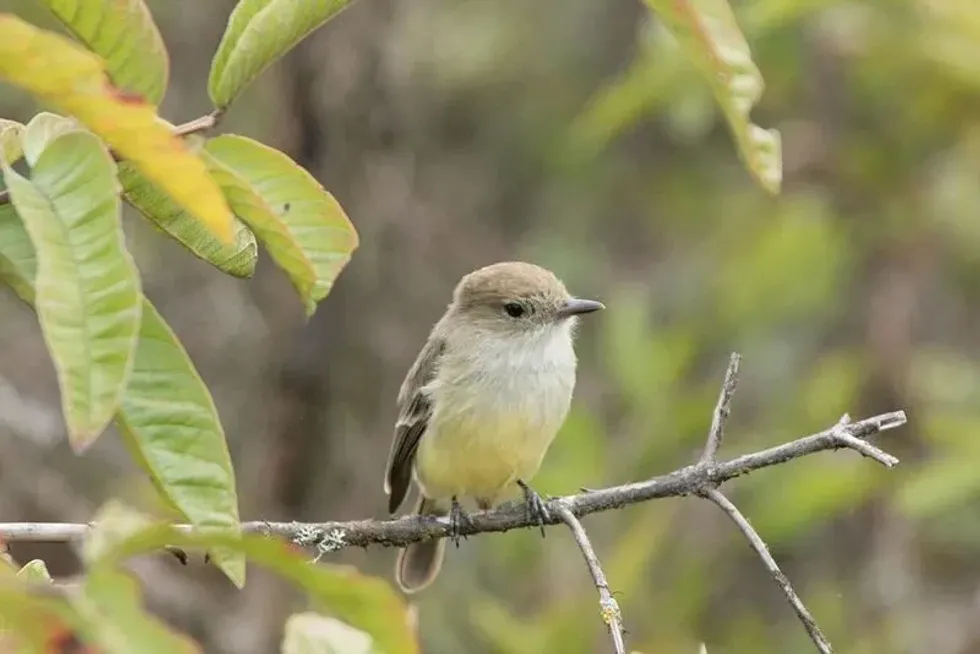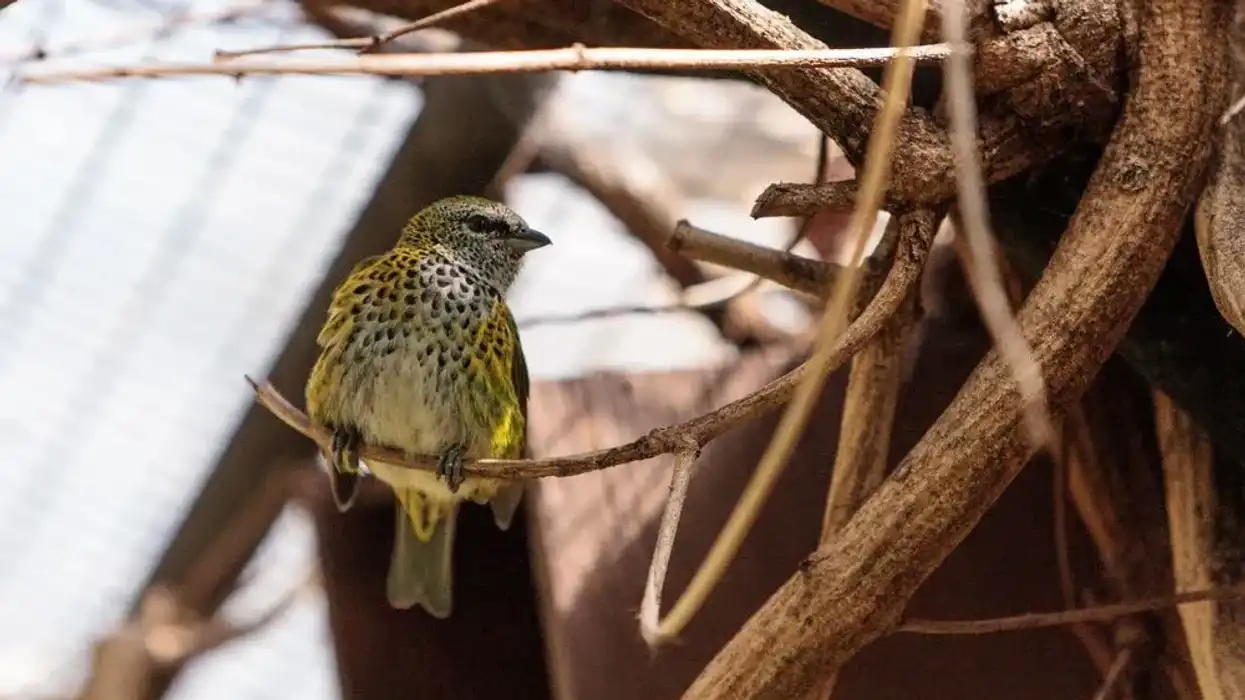Planning to visit the Galapagos islands? Then prepare yourself to be welcomed by this beautiful little brown-yellow bird, the Myiarchus magnirostris.
Also known commonly as the Galapagos flycatcher, this bird is a proud member of the Tyrannidae family. This flycatcher is entirely endemic to these islands, warmly flapping its wings and welcoming new tourists. It might even perch on their shoulders or cameras, and has no fear of humans.
These birds have a thick snout bill, giving it an alternate name of the large-billed flycatcher. This one is also the largest of all flycatchers on the islands.
This species is known to munch down flying insects, hence the ‘flycatcher’ name. In each breeding season, about 3-5 new chicks are born to the new parents.
Thrilled with such exciting information on the Galapagos flycatcher? For more relatable content, check out these gray catbird facts and great-tailed grackle facts for kids.
Galapagos Flycatcher Interesting Facts
What type of animal is a Galapagos flycatcher?
The Galapagos flycatcher is a type of bird.
What class of animal does a Galapagos flycatcher belong to?
The Galapagos flycatcher (Myiarchus magnirostris) belongs to the class of birds.
How many Galapagos flycatchers are there in the world?
The total number of individuals of this flycatcher species is unknown.
Where does a Galapagos flycatcher live?
This bird species is entirely native to the Galápagos Islands of Ecuador, all living on all the main islands.
What is a Galapagos flycatcher's habitat?
The Galapagos flycatcher habitat is usually dry, deciduous, wet or even tropical forests. They might also like shrublands at low altitudes with a lot of cacti around. Generally, you would find them everywhere except in places without natural vegetation.
Who do Galapagos flycatchers live with?
Usually, these birds prefer living alone. It is only during the breeding months that you can find them in pairs.
How long does a Galapagos flycatcher live?
The lifespan of these birds of Euadorian Islands has not yet been recorded.
How do they reproduce?
The breeding activities of the Galapagos flycatcher (Myiarchus magnirostris) usually take place in the hot months of the year, which may fall between January to March. However, there are birds of this species known to nest a few months earlier, maybe in November, or even later in May.
The nests of these birds are built using plant matter, and are located often in tree cavities or near cacti. In recent days, there have been sightings of their nests in urban areas near electricity poles.
There is at least 328 ft (100 m) distance between the nests of these birds. Nests may be lined with hair, feathers or soft plant matter. Funnily, it is said that breeding flycatchers are known to pluck hair from cattle and other mammals.
The clutch size of the Galapagos flycatcher (Myiarchus magnirostris) is about 3-6 eggs. These eggs are buff, adorned with little brown marks. These little chicks begin fledging two weeks after their birth.
What is their conservation status?
The conservation status of the Galapagos flycatcher (Myiarchus magnirostris) is 'Least Concern'.
Galapagos Flycatcher Fun Facts
What do Galapagos flycatchers look like?
This flycatcher is the smallest of all in the Myiarchus genus. The Galapagos flycatcher has a brown-grey plumage, and a lemon yellow/orange hued belly. Their throats are of pale grey color.
The wing bars are of white hue. There is a rusty hue on their head. The bills are stout and of black color.
The crest is usually flat. The tail is a dull brown color, and is also large as compared to others in the same genus. This gives it the name of the 'large-billed flycatcher'. Both the legs and feet are brown-black colored too.
They also have dark brown eyes. Both male and female birds of this species look alike. Young flycatchers have rufous edgings to their tails as well as wings.
How cute are they?
The Galapagos flycatcher bird is very cute.
How do they communicate?
At the brink of the dawn, you can hear these tropical birds of the Tyrannidae family chirping loudly. Their song begins with a ‘whey-bur’, which is followed by multiple ‘huit’ noises. They even make other sounds like ‘weet-weet-wee’ or loud, shrill ‘huit’ sounds.
How big is a Galapagos flycatcher?
This flycatcher species has a body length of about 5.8-6.4 in (14.73-16.25 cm).
It is almost 3 times the size of the bee hummingbird.
How fast can a Galapagos flycatcher fly?
We are unaware of how fast the large-billed flycatcher can fly!
How much does a Galapagos flycatcher weigh?
The Galapagos flycatcher weighs just about 0.42-0.65 oz (12-18.5 g).
What are the male and female names of the species?
There are no separate names for the male and female birds of the flycatcher species.
What would you call a baby Galapagos flycatcher?
There is no designated name for a baby Galapagos flycatcher. However, a baby bird generally is referred to as a chick, nestling or a hatchling.
What do they eat?
These birds of the Myiarchus genus are absolute geniuses when it comes to catching flying insects. Various flying insects such as dragonflies, bees, wasps are common prey of these birds. Even caterpillars mark themselves in the list of things the large-billed flycatcher eats. Sedentary arthropods and other invertebrates are also preyed upon by this species.
Apart from insects, they also feed on fruits of certain trees such as the Tournefortia rufosericea, or other plant matter fallen on the ground.
Are they dangerous?
They are actually harmless, but there are reports saying that this bird might sit on the shoulder of tourists and pluck out human hair to make comfortable nests!
Would they make a good pet?
Yes, these flycatchers are super friendly and we think they would make amazing pets!
Did you know...
This flycatcher of the Myiarchus genus is locally famous as the ‘Papamoscas’.
Earlier, the Galapagos flycatcher was assigned a separate genus called the ‘Eribates’, on the basis of its long tarsus.
These birds are very territorial.
Galapagos flycatchers are greatly affected by the Philornis.
The main threat to these birds are overgrazing, habitat destruction due to fires, diseases and even predation.
The largest of all birds living in these islands of Ecuador is the Galapgos albatross.
One question might have popped into your mind: how did all these animals end on the Galapagos Islands? Well, all species arrived many, many years ago.
Popular species of these islands, such as the Galapagos Iguana, Galapagos penguin, Galapagos tortoises, Galapagos rice rats, have all traveled from the lands of North, South, and Central America.
There may have been a storm, which caused them to hold on to fallen trees or vegetation, and these might have been washed down to the seas. They might have then ended up on the shores of the Galapagos islands.
There are about 43 different types of birds living on the islands, including ducks, pheasants, pigeons, cuckoos, gulls, sandpipers, hawks, falcons, owls, swallows, blackbirds, waxwings, and so on.
Are Galapagos flycatchers an endemic species?
Being endemic to any place means to be found exclusively in those regions. The large-billed flycatcher is an endemic species of the Galapagos Islands of Ecuador, enjoying its tropical habitat and lush natural vegetation.
Types of flycatchers
Generally, there are six families of flycatchers.
Old World flycatchers: these belong to the Muscicapidae family, and about 324 different species come under them, broadly classified into 51 genera.
Tyrant flycatchers: also called the Tyrannidae family, about 437 species are segregaated into 104 genera.
Fairy flycatchers: the Stenostiridae family has 9 species in 4 genera.
Monarch flycatchers: more than 100 bird species are classified in 16 genera in the Monarchidae family.
Silky flycatchers: the Ptiliogonatidae family has only 4 species spread out into 3 genera.
Yellow flycatchers: genus Erythrocercidae has three birds under it.
Learn more about some other birds from our myna bird facts and goshawk facts pages.
You can even occupy yourself at home by coloring in one of our free printable Galapagos flycatcher coloring pages.









